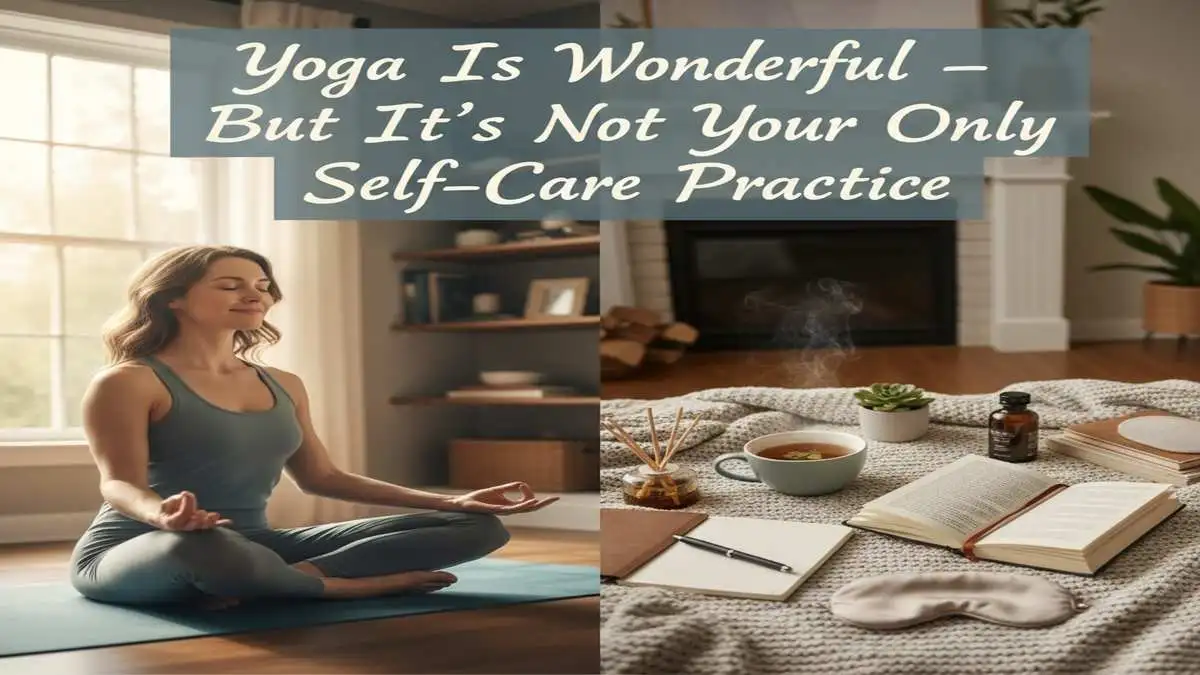YOGA
Yoga Is Amazing – But It’s Not Your Only Self-Care Tool

Yoga has become the go-to ritual for people who want to feel calmer, stronger, and more grounded. A good flow, a deep stretch, a long savasana, sometimes it feels like yoga can fix almost anything.
But real self-care goes beyond the mat.
No matter how mindful or flexible you are, there are moments when your body or mind needs more than movement and breathwork. Persistent pain, strange fatigue, mood changes, or recurring headaches aren’t always something you can just “stretch out.”
That’s where modern healthcare and yoga can actually work together instead of competing with each other.
Table of Contents
Yoga: The First Line of Daily Care
For most people, yoga is an incredible first step toward taking responsibility for their own well-being.
Regular practice can:
- Release physical tension from sitting all day
- Calm a racing mind through breath and focus
- Improve posture, balance, and body awareness
- Help you notice when something feels “off” earlier than you normally would
That last part is important. The more connected you are to your body, the faster you notice subtle signals: one hamstring always tight, dizziness when you stand up, shortness of breath, unusual heart rate during light flows, or emotional heaviness that won’t lift.
Yoga doesn’t just help you feel better, it helps you notice when you’re not okay.
When It’s Not “Just Stress” or “Just Tight Hips”
There’s a fine line between normal soreness and something that needs a professional opinion.
Some signs it might be time to get things checked instead of just pushing through another session:
- A joint that hurts the same way every time you move it
- Pain that wakes you up at night
- Sudden loss of strength on one side
- Shortness of breath that feels new or unusual
- Brain fog, mood swings, or anxiety that stick around for weeks
- Extreme fatigue even when you’re sleeping enough
You can still love your practice and show up on the mat, but listening to your body sometimes means asking for help outside the studio.
Modern Yoga Lifestyle Meets Modern Healthcare
The same person who tracks steps, logs workouts, drinks herbal tea, and follows yoga tutorials on YouTube shouldn’t have to sit on hold just to schedule a basic check-up.
That’s why digital healthcare tools have started to fit naturally into a wellness-focused lifestyle.
Instead of:
- calling during office hours
- being put on hold
- waiting for someone to “call you back”
you can simply open a platform, choose a doctor, see available times, and book appointment online in a couple of taps. It feels less like bureaucracy, more like booking a class or reserving a mat at your favorite studio.
One of the platforms that makes this process smoother is Vosita, a place where patients can find doctors, compare options, and schedule visits without the usual friction. It doesn’t replace yoga or meditation; it quietly supports them by making it easier to handle the medical side of your health.
Yoga + Check-Ups: Not Opposites, but Partners
A lot of people fall into one of two extremes:
- Only doctors, no self-care, wait until things get really bad, then go to the clinic.
- Only yoga and “natural” approaches, avoid doctors completely unless it’s an emergency.
The sweet spot is in the middle.
Think of it like this:
- Yoga keeps you tuned in, mobile, and mentally centered.
- Healthcare professionals help you understand what’s happening when something feels beyond your scope.
That might mean:
- seeing a physiotherapist about a recurring shoulder issue
- getting blood work when your energy crashes for weeks
- talking to a therapist when anxiety or sadness doesn’t shift
- checking in with a primary care doctor before pushing harder in your training
Using both doesn’t make you weak. It makes you smart.
Building a Softer, Smarter Version of “Healthy”
It’s easy to turn wellness into another pressure: eat perfectly, move daily, meditate, sleep early, never miss a practice.
But real health is more flexible.
Some days, your best choice is a strong vinyasa.
Some days, it’s a slow yin session.
And some days, it’s closing your yoga app and making that appointment you’ve been putting off for months.
Your mat is a powerful tool, but it doesn’t have to carry everything alone. When you combine mindful movement, rest, good food, emotional awareness, and timely support from professionals, you give your body and mind the best chance to stay strong for the long run.
If yoga has helped you notice that something doesn’t feel right, that’s not a failure of your practice. That’s your practice doing exactly what it was meant to do: helping you listen.
-

 GENERAL5 months ago
GENERAL5 months agoChristofle – For Those Who Dream of Family Heirloom Silver
-

 SPORTS7 months ago
SPORTS7 months agoDiscover the World of Football with Streameast: Watch Your Favorite Leagues and Tournaments
-

 GENERAL3 months ago
GENERAL3 months agoUncovering the World of кинокрадко: The Dark Side of Film Piracy
-

 GENERAL1 month ago
GENERAL1 month agoATFBooru: Anime, Gaming, and Subculture Imageboard























